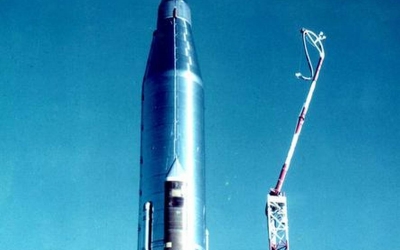
How do you feel when you are in on a secret that your friends do not know yet? How do you feel when your parents ask you to keep a secret before the planned big reveal to the extended family? Keeping answers to those questions in mind, imagine how it would be if you are keeping a secret for your country. And add to it the fact that you are among the select few who know the complete truth…
Clarke’s idea
The idea of space satellites for communication was first proposed in 1945 by popular English science fiction writer Arthur C. Clarke. Even though technology wasn’t as advanced, he believed that a group of Earth-orbiting satellites could securely send information to even remote locations. With transatlantic cables and radio signals incapable of achieving that, the need was definitely there. But it wasn’t until the end of the 1950s that his ideas became reality.
The Signal Communication by Orbiting Relay Equipment (SCORE) project was a top-secret mission that went on to become the world’s first successful demonstration of a long-range satellite radio-relay system. It started off as a routine suborbital mission test for the outsiders, before going on to reveal its secrets.
Strict orders for secrecy
Shrouded in secrecy, only 88 people were informed of its existence, with strict orders not to reveal anything to the media, colleagues, or even their own families. The idea was to inform the world if the mission was successful or to keep it a secret forever if it failed.
Apart from the burden of secrecy, there were other challenges too that had to be surmounted. The communication system had to be developed, the payload had to be within a certain weight and ground stations had to be established. On top of these, the SCORE communication package was to be built into the Atlas launch vehicle’s side pods, and not as a discrete spacecraft as was the norm back then. And all of this had to be done within a few months.
By the time SCORE project’s Atlas B was launched on December 18, 1958, the Soviets had already launched three successful Sputnik satellites into orbit. With the pressure on them, the Americans were not only trying to look further from their past failures, but also boost their national image once again.
Safety hazard? Not really!
The observing engineers noticed that the Atlas veered off its course considerably, prompting a safety hazard. This led to a signal to the Range Safety Officer to destroy it, who, however, ignored the message and let the rocket surge forward.
This was because the Range Safety Officer was among the 35 people in the entire world with knowledge of what Project SCORE’s motives were. Among the original 88, 53 were misled to believe the mission was cancelled and that this was simply another missile test. Far from being a routine test, however, it was to send an Atlas intercontinental ballistic missile (ICBM) into low Earth orbit and also launch the world’s first communication satellite.
Only as the rocket veered off its presumed course towards low Earth orbit was its primary objective revealed. While an Atlas ICBM achieved orbit for the first time in history, the second objective proved a little more elusive.
The communications system was designed such that it would not only transmit pre-recorded messages that could be heard by anyone in Earth, but also send and receive messages from the SCORE ground stations. The pre-recorded messages included one from the U.S. President Dwight Eisenhower.
During the first few orbits, the ground station signalled the communication package to broadcast President Eisenhower’s message. But it wasn’t until the 13th orbit, on December 19, that it finally responded as the ground station commanded the back-up system.
Eisenhower’s message
“This is the President of the United States speaking,” the recording said. “Through the marvels of scientific advance, my voice is coming to you from a satellite circling in outer space. My message is a simple one. Through this unique means, I convey to you and to all mankind America’s wish for peace on Earth and goodwill toward men everywhere.”
Despite being developed and launched at almost break-neck speed, Project SCORE ticked off a lot of boxes for the Americans. It was the world’s first communication satellite, even though its batteries died 12 days after launch and it burned up as it reentered the Earth’s atmosphere on January 21, 1959. It was the first successful trial of an Atlas launch vehicle, which would go on to be used for Project Mercury (taking the first Americans to space). It was the heaviest object until then to be launched into orbit and also the first time a missile-guidance system was used to put a satellite into orbit.
As for Eisenhower’s message, it was added to the National Recording Registry (a list of sound recordings that are “culturally, historically or aesthetically important, and/or inform or reflect life in the United States”) by the Library of Congress over 50 years after it was delivered. With that, SCORE’s message has been saved for generations to come.
Picture Credit : Google

